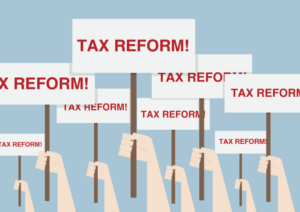How to Take Advantage of the Paycheck Protection Program

You may be wondering how to take advantage of the Paycheck Protection Program? Well, here is a letter one of our Partners sent out to his clients.
Dear Client,
I wanted to outline the Paycheck Protection Program (PPP Program) that was part of the CARE ACT that was passed and signed by the president on March 27, 2020 and how it may impact your business. We are getting many calls about this program, how to apply, limit amounts, documentation needed, tax implications and wanted to share its intricacies with you.
Please note that this is program is a loan program with loan forgiveness features that may result in state taxable income. Additionally, if you currently have loans with the SBA or are considering applying to a different program, you should talk to your SBA lender on what impact this may have on your future needs or ability to take advantage of this program. Accordingly, you should treat this like any other loan.
WHO QUALIFIES: Any business concern (includes Non Profits)
- Must have less than 500 employees
- Can go over the 500 employee limit for franchises and businesses in the accommodation and food sectors (NAICS code beginning with 72) if not more than 500 employees per physical location.
The Paycheck Protection Program (PPP) has five phases:
- Getting the small business administration loan (SBA loan) from a qualified Bank or institution
- Documentation needed:
- Establish that you were in operation on February 15, 2020.
- Payroll tax returns filed with the IRS and
- Form 1099‐MISC paid to independent contractors or
- Income and expenses from sole proprietorships‐Schedule C
- Certification by borrower
- Documentation needed:
-
- Documenting costs that were spent on covered expenditures
- Submitting documents to the SBA calculating the balance of the loan forgiven
- Conversion, if any, of the balance of the loan after forgiveness to a regular SBA loan or payoff of balance.
- Tax effects of the loan forgiveness
SIZE OF FEDERAL PROGRAM: $349 Billion
MAXIMUM LOAN SIZE: $10,000,000
DATE LOAN NEEDS TO BE TAKE OUT: February 15, 2020 thru June 30, 2020 (covered period)
HOW TO COMPUTE OUT MAXIMUM LOAN SIZE
- Loan size is 2.5 times the average monthly “payroll costs” from the 1‐ year period before the date on which the loan is
- Seasonal employers can use the average total monthly payments for payroll for 12 weeks beginning February 15, 2019 or March 1, 2019 and ending June 30,
- Payroll costs include:
For Companies having employees:
-
- Employee salary, wages commissions, termination or similar compensation
- Separation and dismissal compensation
- Cash tips or equivalent
- Vacation, parental, family, medical leave
- Healthcare benefits and insurance premiums
- Retirement benefits
- State and local taxes on employee compensation
Self‐employed individuals or sole proprietors
Compensation payments to or income of self‐employed individuals or independent contracts that is treated as earnings from self‐employment.
Compensation that does not qualify:
-
- Compensation cannot be more than $100,000 per annualized rate for any employee, self‐employed individual or independent contractor so any amount over the $100,000 limit does not
- Social Security, railroad retirement tax and Medicare taxes, employee and employer portion
- Federal income tax withheld from employees
- Any compensation of an employee whose principal place of residence is outside of the United States
- Qualified sick leave wages and qualified family leave wages, in each case, for which a credit is allowed under the Families First Coronavirus Response
COST OF LOAN, COLLERATAL, PERSONAL GUARANTEES‐ none required except to the extent you don’t use the proceeds for its authorized purpose. Please consult with your SBA lender.
INTEREST RATE AND PREPAYMENT‐ not to exceed 4% and no prepayment penalty
LOAN CONVERSION‐ total principal balance of the loan less any forgiveness will be converted to an SBA loan. Converted principal balance includes proceeds not used for an allowable use and will have recourse issues to the Company or shareholder.
USE OF LOAN PROCEEDS
The loan proceeds can be used for the following expenses incurred during Feb15, 2020‐ June 30, 2020:
- Payroll costs described above less compensation that doesn’t qualify
- Costs related to group health care benefits during period of sick, medical or family leave and insurance premiums
- Interest payments on any mortgage (does not include any prepayment or payment of principal)
- Rent
- Utilities and
- Interest on any other debt obligations that were incurred before February 15,
FORGIVENESS OF LOAN PROCEEDS
The amount eligible to be forgiven is the sum of the following costs incurred and payments made during the 8‐week period after the PPP loan is originated (forgivable amount):
- payroll costs (as previously described)
- payments of interest on any liability of the borrower that is a mortgage on real or personal property and that was incurred before February 15, 2020 (covered mortgage obligation)
- payments on any rent obligated under a leasing agreement in force before February 15, 2020 (covered rent obligations)
- payments for a service for the distribution of electricity, gas, water, transportation, telephone or internet access for which service began before February 15, 2020 (covered utility payments).
A borrower with tipped employees, as described in the Fair Labor Standards Act of 1938, may receive forgiveness for additional wages paid to those employees.
The loan forgiveness cannot exceed the principal balance of the PPP loan.
REDUCTION IN THE FORGIVENESS OF LOAN
The reduction in loan forgiveness can occur if there is a reduction in the average full‐time equivalent employees compared to certain periods in 2019 or 2020 OR reduction in an employee’s salary and wages compared to 25% of the salary and wages paid quarterly to the employee before the 8‐week period.
REDUCTION FOR THE REDUCTION IN THE NUMBER OF FULL‐TIME EQUIVALENT EMPLOYEES
Loan forgiveness is reduced by:
the eligible costs incurred during the 8‐week period above times the ratio
-
- of the average number of full‐time equivalent employees per month during the 8‐ week period divided by the average of either
- full‐time equivalent employees per month from February 15, 2019 to June 30, 2019 or
- full‐time equivalent employees per month from January 1, 2020 to February 29,
- Seasonal employers can use the amount of full‐time equivalent employees per month from February 15, 2019 and ending June 30,
- Employees that are rehired during February 15, 2020 and June 30, 2020 can improve the above ratio
- of the average number of full‐time equivalent employees per month during the 8‐ week period divided by the average of either
REDUCTION FOR REDUCTION IN THE AMOUNT OF SALARY AND WAGES PAID TO WORKERS WHO DID NOT RECEIVE DURING ANY 2019 PAY PERIOD ON AN ANNUALIZED SALARY OF MORE THAN $100,000
Loan forgiveness is also reduced by: The difference between:
- 25% of salary and wages paid to any employee (who did not earn $100,000 on an annualized basis during 2019) during the prior quarter before the 8‐ week period less
- The total salary or wages paid of any employee (who did not earn $100,000 on an annualized basis during 2019) during the 8‐ week
- Employees that are rehired during February 15, 2020 and June 30, 2020 can reduce the reduction
DOCUMENTATION TO BE PROVIDED TO LENDER FOR LOAN FORGIVENESS
- Documentation verifying the number of full‐time equivalents employees on payroll & pay rates (these would be the applicable payroll journals)
- IRS Payroll tax filings for the applicable period elected and the 8‐ week period of the number of full‐time equivalents
- If client has rehired employees, the applicable IRS payroll tax
- State Income, payroll, and unemployment insurance
- cancelled checks, payment receipts, transcripts of accounts, or other documents verifying payments on covered mortgage obligations, payments on covered
- lease obligations, and covered utility payments
- a certification that such documents are true and correct, as well the amount to be forgiven, and
- any other documentation the SBA Administrator deems
- Lender will provide determination within 60 days of receiving the application for
BALANCE OF LOAN AFTER LOAN FORGIVENESS ALLOWED
If there is a balance on the loan after the forgiveness of the loan proceeds, it will be converted to an SBA loan with a maturity date of not more than 10 years and an interest rate of not more than 4%. It is not clear if the regular SBA fees are applicable so please contact your SBA lender.
TAXABILITY OF THE FORGIVENESS LOAN PROCEEDS
- For federal purposes, the forgiveness of loan proceeds are not
- States that have not conformed to the Internal revenue code as of the date of enactment of the CARES act (like California) will likely tax the amount of the forgiveness unless another exception (insolvency)
TIMING
The SBA will be providing additional guidance to lenders and borrowers. We anticipate it may take a couple weeks before applications can be processed.
FINAL THOUGHTS
- For those taxpayers that can take out a loan in the amount of the expected loan forgiveness, this is a great incentive. However, circumstances can change and therefore your risk profile and cash flow needs must be taken into
- Taxpayers with existing loans will have to review their loan covenants to see if this additional debt will cause any default under their existing loan
- If you so inclined to use this program, I would review your cash flow needs for the coming months in anticipation of paying off the remaining balance of the loan in 2020 if possible.
- The earliest that a lender will be able to give you a final determination of the amount of loan forgiveness is 60 days after they receive your documentation which cannot be submitted prior to June 30,
- There are provisions for deferment of the payment of principal, interest and fees on the SBA loan of not less than 6 months and not more than 1 year from the date of loan origination. This deferment if warranted should be considered in your cash flow
- If you have affiliated entities that you or related parties own through stock ownership or voting power, please contact us so we assist you on figuring out if you qualify for the 500 employee requirement.
Let me know if we can assist you during this process. Please feel free to call.
Sincerely,
Steven Singer CPA Partner
We hope you found this article about how to take advantage of the Paycheck Protection Program helpful. If you have questions or need expert tax or family office advice that’s refreshingly objective (we never sell investments), please contact us or visit our Family office page or our website at www.GROCO.com. Unfortunately, we no longer give advice to other tax professionals gratis.
To receive our free newsletter, contact us here.
Subscribe to our YouTube Channel for more updates.
Considerately yours,
GROCO, GROCO Tax, GROCO Technology, GROCO Advisory Services, GROCO Consulting Services, GROCO Relationship Services, GROCO Consulting/Advisory Services, GROCO Family Office Wealth, and GROCO Family Office Services.

Decision Making in Your Family Business: A Guide for Owners
Decision Making in Your Family Business: A Guide for Owners Group decision making is a topic that has spawned many academic studies, books, and white papers. It is never easy to get a group of human beings to make a decision together. It’s hard enough for a single individual to make a decision! Add to…
Top Tips for Becoming More Productive
Top Tips for Becoming More Productive Unless you happen to be a sloth, everyone wants to be more productive. Productivity is one of the keys to personal and career success. The problem is, many people just aren’t willing to do what it takes to become more productive. Thus, being productive is easier said than done.…
Where Do Most Americans Fall With Proposed Tax Reform?
Where Do Most Americans Fall With Proposed Tax Reform? Tax reform is coming. At least that’s what we’ve been led to believe for the better part of a year now. Ever since Donald Trump won the election last November, most of the nation has been expecting tax reform. Here we are a year later and…
What’s the Biggest Mistake By People Who Work a Side Job?
What’s the Biggest Mistake By People Who Work a Side Job? Everyone wants to make more money. For many that mean picking up a side job to earn a little more cash. There are literally hundreds of side jobs out there but most are only good for a few extra dollars. However, there is a…




